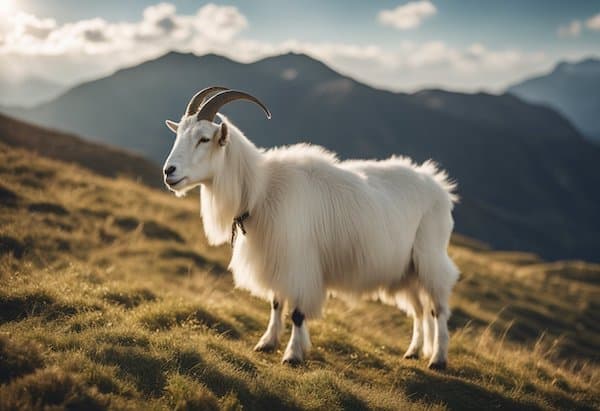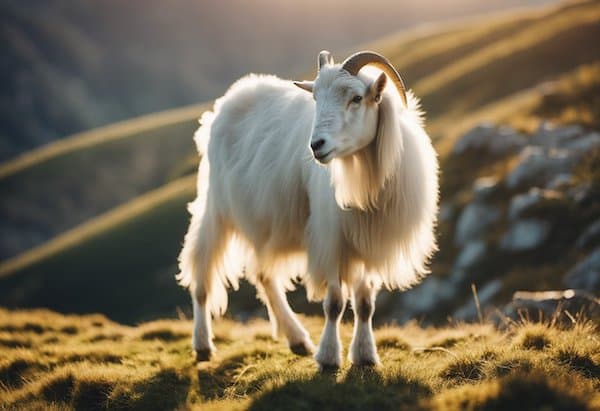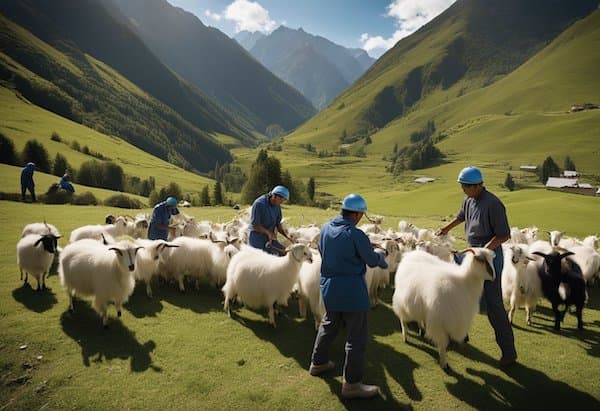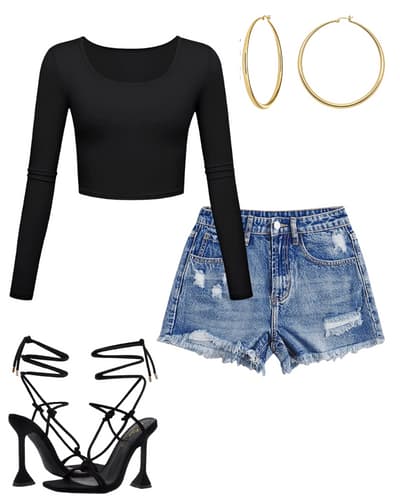Why Is Cashmere So Expensive? What Makes It Special?
Cashmere is revered for its softness, warmth, and long-lasting quality, making it a luxurious fabric that stands out in the fashion industry.
For example, a cashmere sweater offers a level of sophistication and comfort that is difficult to find in other materials.
People often justify the expense of cashmere products by their superior attributes including exceptional softness, warmth, and durability.
But what is it that really sets cashmere apart from other wool products?
Let’s get into it.
Why Is Cashmere So Expensive?
The rarity, cost of creation, low supply and high demand, geographical constraints, and limited supply all have a hand in the high cost of cashmere.
Throughout this post, we’ll dive into each aspect to explain why it has such an impact on the most sought-after material in the fashion world.

The Process Of Creation
The high cost of cashmere is not just a reflection of its luxurious status, but also a result of the intricate and intensive process required to produce this fine material.
The production of cashmere begins with the delicate Cashmere fiber that is obtained from the fine, soft undercoat of the Capra hircus, commonly known as pashmina goats.
These goats possess a double fleece consisting of a coarse outer guard hair layer and an insulating undercoat, which is the cashmere itself.
Due to its fineness, cashmere fiber provides exceptional warmth without adding bulk.
Harvesting this wool is a labor-intensive process that is performed only once a year, typically in the spring when the goats naturally shed their coats.
The wool then undergoes a meticulous sorting procedure to separate the fine under hair from the coarse outer hair.
This process, coupled with the limited quantity of fiber each goat produces annually, significantly contributes to the cost of cashmere.
Moreover, the subsequent stages of production, including spinning, weaving, and dyeing, adhere to rigorous standards to maintain the integrity and softness of the fabric.
The attention to detail and the artisan skill required to produce cashmere clothing are additional factors that influence their high price point.
Consumers who invest in cashmere are paying for an exceptional textile that promises elegance and longevity, making it a timeless addition to any wardrobe.
As mentioned previously, cashmere can only come from the cashmere goat and can only be contained during certain periods of the year.
Because of this, there is a low supply yet a high demand, which will always drive up costs.
In the table below we’ll show a breakdown of the items that increase cost in the production and sale of cashmere goods.
Table: Breakdown of Cashmere Costs
| Aspect | Description | Impact on Cost |
|---|---|---|
| Raw Material | Scarce; comes from specific goats. | Increases cost |
| Collection Method | Hand-combed; labor-intensive. | Increases cost |
| Fiber Processing | Cleaning and sorting by length and quality. | Increases cost |
| Quality | Softness and fineness of fibers are crucial. | Increases cost |
Cashmere’s exclusivity ultimately comes down to the rarity and quality of the fiber combined with the meticulous and time-consuming processes required to create cashmere products.
These factors justify the luxury status and high cost associated with cashmere.
It’s Softness & Lightweight Properties
Cashmere is known for its incredible softness.
Sure, there are many other comfortable materials out there to make tops with, but none compare to the softness of cashmere.
Not to mention, it’s also hypoallergenic which is beneficial for those with sensitive or reactive skin.
Additionally, cashmere manages to be lightweight while providing insulation, a difficult combination to achieve.
Hence, why cashmere scarves are such a popular choice for the colder weather.
Rarity & Limited Supply
The Capra hircus is a breed of goat that is known for its limited hair yield.
Annually, a single goat produces only around 150 grams of the undercoat.
To produce just one average-sized cashmere sweater, the undercoat from four to six goats is required.
This limited yield is a major factor that contributes to the high cost of the final product.
Geographical Constraints on Production
Cashmere production is geographically constrained to regions where these goats thrive, primarily in parts of Central Asia and Inner Mongolia.
The typical geographical conditions that support cashmere goats are mountain plateaus, which provide the cold climate necessary for the growth of their dense undercoat.
The chart below outlines the key areas for cashmere production and the estimated percentage of the world’s supply they provide.
| Region | Estimated % of World’s Cashmere Supply |
|---|---|
| Inner Mongolia | 30% |
| Other parts of China | 50% |
| Mongolia | 20% |
The cashmere industry is closely tied to these areas, further emphasizing the rarity of cashmere as a resource.
Sourcing and production constraints maintain cashmere’s status as a prized and premium material in the textile industry.
Production & Manufacturing
The labor-intensive production process of cashmere begins with harvesting.
The fine, soft undercoat must be combed out by hand during the spring molting season.
This process is delicate and time-consuming, as workers must ensure not to harm the goat or damage the length of the fibers, which are crucial for high quality cashmere.
- Method: Hand-combing
- Season: Spring molting
- Frequency: Once a year
After the cashmere fiber is collected, the next step involves the manufacturing process to transform these fibers into yarn.
The fibers must first be cleansed of impurities and sorted by length.
The quality of cashmere can be determined by the length and fineness of the fibers used, with longer fibers yielding a higher-quality yarn that is less prone to pilling.
Only then can they be spun into yarn.
Production of cashmere yarn is careful and thoughtful to preserve fiber integrity.
Producing high-quality cashmere involves stringent standards throughout the production and manufacturing process.
Every step, from the initial fiber selection to the final spinning, impacts the texture and quality of the cashmere yarn.
Hence, producers adhere to tight specifications to ensure a high-quality cashmere product that justifies its cost.
Each step is integral to the costly production process, directly contributing to the exceptional feel and durability of the final cashmere product.

Comparing Cashmere to Other Types of Wool
When investigating the value of cashmere, its characteristics are often benchmarked against other wools for softness, warmth, and quality to understand its high price tag.
Cashmere provides insulation far superior to other wool types.
The fineness of cashmere fibers, typically between 14 to 19 microns in diameter, is comparable to that of human hair, making it incredibly gentle against the skin.
Cashmere Vs. Sheep’s Wool
Sheep’s wool comes at a lower price than cashmere, and for good reason.
Sheep’s wool is the most common type of wool and varies greatly in quality.
However, even the best quality sheep’s wool is not as soft or as fine as cashmere.
Sheep’s wool fibers are thicker, averaging 25 to 30 microns, which contributes to a coarser feel.
The quality of cashmere is denoted by its grade, with Grade A being the highest, reflecting the fiber’s diameter and length.
Higher quality cashmere is softer, less prone to pilling, and more durable than both lower-quality cashmere and most sheep’s wool.
In terms of warmth, cashmere offers up to three times the insulation of sheep’s wool, despite being significantly lighter.
Cashmere Vs. Angora Wool
While cashmere comes from the undercoat of cashmere goats, angora comes from the soft undercoat of angora rabbits.
Angora is one of the softest wools and is comparable to cashmere in that regard, however, angora wool is more delicate and prone to shedding.
Additionally, it isn’t hypoallergenic like cashmere, which can be an issue for those with allergies.
Cashmere Vs. Mohair Wool
Mohair is another wool commonly used in the fashion industry.
However, it is not as soft as cashmere, and just like angora wool, it can be problematic for those with allergies or sensitive skin.

Cultural and Historical Significance
Cashmere wool has not only been a luxurious material but also a significant cultural symbol throughout history.
Its roots are deep-seated in tradition and its impact spans across various societies and historical moments.
- Early Encounters: Cashmere originates from the Kashmir region, where Indian emperors once donned garments made from this fine fiber.
- Expansion to the West: By the 19th century, cashmere became a coveted material in Europe. It made its journey through the fashion industry, with its influence peaking in the early 1900s, as British women coveted the distinct feel and quality of cashmere.
- Incorporation into Fashion: The fashion industry has consistently embraced cashmere for its versatility and elegance. Designers often highlight its luxurious nature by incorporating it into high-end collections.
Conclusion
Historically, cashmere has been a symbol of status and wealth accessible predominantly to the affluent and wealthy.
While it’s not the most expensive wool in the world, it is certainly high on the list.
Its rarity, cost of creation, and geographical constraints make it a costly item to produce for manufacturers and a costly item for consumers to purchase.
Other Posts You Might Like:




